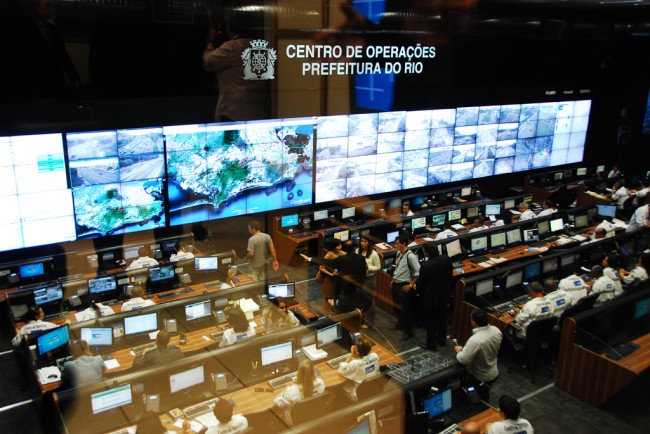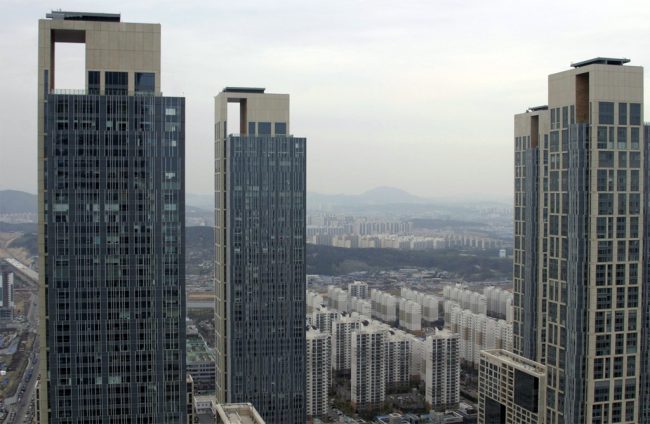
We are celebrating 15 years — and counting — of stories that are deeply researched and deeply felt, that build a historical record of what the city has been.
We are celebrating 15 years — and counting — of stories that are deeply researched and deeply felt, that build a historical record of what the city has been.
On November 6th, we will co-host a talk by writer and urbanist Adam Greenfield at the New Museum entitled “Another City is Possible: Alternatives to the Smart City.” The event marks the release of Greenfield’s new pamphlet, “Against the smart city,” the first installment of his forthcoming book The City is Here for You to Use, in which he challenges the prevalent cultural understanding of the current deployment and proposed possibilities of networked information technology. The potential of the devices and information now available is rich, but our awareness of the powerful ways in which these systems and their use will alter our world — our policies, economies, built environment, and, in Greenfield’s words, “the structure and content of our own psyches” — is limited. Greenfield argues that not only is the existing definition of the “smart city” too narrow, but it also promotes an undesirable vision of a future city with centralized computational surveillance and control, driven by those in power. However, Greenfield maintains that we can imagine and support an alternative vision of the smart city, one that responds to the needs, demands, and desires of all of its citizens, and that understands and works with the complex, interconnected, imperfect, and very human realities of urban existence.
What follows is an excerpt from “Against the smart city.” In it, Greenfield unpacks some of the language so often used to describe the smart city — in this case, the vocabulary employed by the manufacturers and marketers of the systems in question and such blank-slate “smart cities” as New Songdo City, South Korea; Masdar City, United Arab Emirates; and PlanIT Valley, Portugal; three urban-scale development projects currently underway — in order to better understand the problematic assumptions and assertions on which the prevailing definition rests. In so doing, he champions a more informed, more sophisticated, more responsive, more empowering “smart city.” —V.S.
The smart city pretends to an objectivity, a unity and a perfect knowledge that are nowhere achievable, even in principle.
Of the major technology vendors working in the field, Siemens makes the strongest and most explicit statement[1] of the philosophical underpinnings on which their (and indeed the entire) smart-city enterprise is founded: “Several decades from now cities will have countless autonomous, intelligently functioning IT systems that will have perfect knowledge of users’ habits and energy consumption, and provide optimum service…The goal of such a city is to optimally regulate and control resources by means of autonomous IT systems.”
We’ve already considered what kind of ideological work is being done when efforts like these are positioned as taking place in some proximate future. The claim of perfect competence Siemens makes for its autonomous IT systems, though, is by far the more important part of the passage. It reflects a clear philosophical position, and while this position is more forthrightly articulated here than it is anywhere else in the smart-city literature, it is without question latent in the work of IBM, Cisco and their peers. Given its foundational importance to the smart-city value proposition, I believe it’s worth unpacking in some detail.
What we encounter in this statement is an unreconstructed logical positivism, which, among other things, implicitly holds that the world is in principle perfectly knowable, its contents enumerable, and their relations capable of being meaningfully encoded in the state of a technical system, without bias or distortion. As applied to the affairs of cities, it is effectively an argument there is one and only one universal and transcendently correct solution to each identified individual or collective human need; that this solution can be arrived at algorithmically, via the operations of a technical system furnished with the proper inputs; and that this solution is something which can be encoded in public policy, again without distortion. (Left unstated, but strongly implicit, is the presumption that whatever policies are arrived at in this way will be applied transparently, dispassionately and in a manner free from politics.)

Masdar City, Abu Dhabi, United Arab Emirates | Image via arwcheek
Every single aspect of this argument is problematic.
— Perfectly knowable, without bias or distortion: Collectively, we’ve known since Heisenberg that to observe the behavior of a system is to intervene in it. Even in principle, there is no way to stand outside a system and take a snapshot of it as it existed at time T.
But it’s not as if any of us enjoy the luxury of living in principle. We act in historical space and time, as do the technological systems we devise and enlist as our surrogates and extensions. So when Siemens talks about a city’s autonomous systems acting on “perfect knowledge” of residents’ habits and behaviors, what they are suggesting in the first place is that everything those residents ever do — whether in public, or in spaces and settings formerly thought of as private — can be sensed accurately, raised to the network without loss, and submitted to the consideration of some system capable of interpreting it appropriately. And furthermore, that all of these efforts can somehow, by means unspecified, avoid being skewed by the entropy, error and contingency that mark everything else that transpires inside history.
Some skepticism regarding this scenario would certainly be understandable. It’s hard to see how Siemens, or anybody else, could avoid the slippage that’s bound to occur at every step of this process, even under the most favorable circumstances imaginable.
However thoroughly Siemens may deploy their sensors, to start with, they’ll only ever capture the qualities about the world that are amenable to capture, measure only those quantities that can be measured. Let’s stipulate, for the moment, that these sensing mechanisms somehow operate flawlessly, and in perpetuity. What if information crucial to the formulation of sound civic policy is somehow absent from their soundings, resides in the space between them, or is derived from the interaction between whatever quality of the world we set out to measure and our corporeal experience of it?
The bold claim of perfect knowledge appears incompatible with the messy reality of the world as we experience it.Other distortions may creep into the quantification of urban processes. Actors whose performance is subject to measurement may consciously adapt their behavior to produce metrics favorable to them in one way or another. For example, a police officer under pressure to “make quota” may issue citations for infractions she would ordinarily overlook; conversely, her precinct commander, squeezed by City Hall to present the city as an ever-safer haven for investment, may downwardly classify[2] felony assault as a simple misdemeanor. This is the phenomenon known to viewers of The Wire as “juking the stats,”[3] and it’s particularly likely to happen when financial or other incentives are contingent on achieving some nominal performance threshold. Nor is it the only factor likely to skew the act of data collection; long, sad experience suggests that the usual array of all-too-human pressures will continue to condition any such effort. (Consider the recent case in which Seoul Metro operators were charged with using CCTV cameras to surreptitiously ogle women passengers[4], rather than scan platforms and cars for criminal activity as intended.)
What about those human behaviors, and they are many, that we may for whatever reason wish to hide, dissemble, disguise, or otherwise prevent being disclosed to the surveillant systems all around us? “Perfect knowledge,” by definition, implies either that no such attempts at obfuscation will be made, or that any and all such attempts will remain fruitless. Neither one of these circumstances sounds very much like any city I’m familiar with, or, for that matter, would want to be.
And what about the question of interpretation? The Siemens scenario amounts to a bizarre compound assertion that each of our acts has a single salient meaning, which is always and invariably straightforwardly self-evident — in fact, so much so that this meaning can be recognized, made sense of and acted upon remotely, by a machinic system, without any possibility of mistaken appraisal.

Rio de Janeiro Intelligent Operations Center, created by IBM | Image via World Resources Institute
The most prominent advocates of this approach appear to believe that the contingency of data capture is not an issue, nor is any particular act of interpretation involved in making use of whatever data is retrieved from the world in this way. When discussing their own smart-city venture, senior IBM executives[5] argue, in so many words, that “the data is the data”: transcendent, limpid and uncompromised by human frailty. This mystification of “the data” goes unremarked upon and unchallenged not merely in IBM’s material, but in the overwhelming majority of discussions of the smart city. But different values for air pollution in a given location can be produced by varying the height at which a sensor is mounted by a few meters. Perceptions of risk in a neighborhood can be transformed by altering the taxonomy used to classify reported crimes ever so slightly.[6] And anyone who’s ever worked in opinion polling knows how sensitive the results are to the precise wording of a survey. The fact is that the data is never “just” the data, and to assert otherwise is to lend inherently political and interested decisions regarding the act of data collection an unwonted gloss of neutrality and dispassionate scientific objectivity.
The bold claim of perfect knowledge appears incompatible with the messy reality of all known information-processing systems, the human individuals and institutions that make use of them and, more broadly, with the world as we experience it. In fact, it’s astonishing that anyone would ever be so unwary as to claim perfection on behalf of any computational system, no matter how powerful.
— One and only one solution: With their inherent, definitional diversity, layeredness and complexity, we can usefully think of cities as tragic. As individuals and communities, the people who live in them hold to multiple competing and equally valid conceptions of the good, and it’s impossible to fully satisfy all of them at the same time. A wavefront of gentrification can open up exciting new opportunities for young homesteaders, small retailers and craft producers, but tends to displace the very people who’d given a neighborhood its character and identity. An increased police presence on the streets of a district reassures some residents, but makes others uneasy, and puts yet others at definable risk. Even something as seemingly straightforward and honorable as an anticorruption initiative can undo a fabric of relations that offered the otherwise voiceless at least some access to local power. We should know by now that there are and can be no[7] Pareto-optimal solutions for any system as complex as a city.

PlanIT Valley Rendering | Image via PlanIT Valley
— Arrived at algorithmically: Assume, for the sake of argument, that there could be such a solution, a master formula capable of resolving all resource-allocation conflicts and balancing the needs of all a city’s competing constituencies. It certainly would be convenient if this golden mean could be determined automatically and consistently, via the application of a set procedure — in a word, algorithmically.
In urban planning, the idea that certain kinds of challenges are susceptible to algorithmic resolution has a long pedigree. It’s already present in the Corbusian doctrine that the ideal and correct ratio of spatial provisioning in a city can be calculated from nothing more than an enumeration of the population, it underpins the complex composite indices of Jay Forrester’s 1969 Urban Dynamics[8], and it lay at the heart of the RAND Corporation’s (eventually disastrous) intervention in the management of 1970s New York City.[9] No doubt part of the idea’s appeal to smart-city advocates, too, is the familial resemblance such an algorithm would bear to the formulae by which commercial real-estate developers calculate air rights, the land area that must be reserved for parking in a community of a given size, and so on.
In the right context, at the appropriate scale, such tools are surely useful. But the wholesale surrender of municipal management to an algorithmic toolset — for that is surely what is implied by the word “autonomous” — would seem to repose an undue amount of trust in the party responsible for authoring the algorithm. At least, if the formulae at the heart of the Siemens scenario turn out to be anything at all like the ones used in the current generation of computational models, critical, life-altering decisions will hinge on the interaction of poorly-defined and surprisingly subjective values: a “quality of life” metric, a vague category of “supercreative[10]” occupations, or other idiosyncrasies along these lines. The output generated by such a procedure may turn on half-clever abstractions, in which a complex circumstance resistant to direct measurement is represented by the manipulation of some more easily-determined proxy value: average walking speed stands in for the more inchoate “pace” of urban life, while the number of patent applications constitutes an index of “innovation.”
Even beyond whatever doubts we may harbor as to the ability of algorithms constructed in this way to capture urban dynamics with any sensitivity, the element of the arbitrary we see here should give us pause. Given the significant scope for discretion in defining the variables on which any such thing is founded, we need to understand that the authorship of an algorithm intended to guide the distribution of civic resources is itself an inherently political act. And at least as things stand today, neither in the Siemens material nor anywhere else in the smart-city literature is there any suggestion that either algorithms or their designers would be subject to the ordinary processes of democratic accountability.

New Songdo City, Korea | Image via Nicolette Mastrangelo
— Encoded in public policy, and applied transparently, dispassionately and in a manner free from politics: A review of the relevant history suggests that policy recommendations derived from computational models are only rarely applied to questions as politically sensitive as resource allocation without some intermediate tuning taking place. Inconvenient results may be suppressed, arbitrarily overridden by more heavily-weighted decision factors, or simply ignored.
The best-documented example of this tendency remains the work of the New York City-RAND Institute, explicitly chartered to implant in the governance of New York City “the kind of streamlined, modern management that Robert McNamara applied in the Pentagon with such success”[11] during his tenure as Secretary of Defense (1961-1968). The statistics-driven approach that McNamara’s Whiz Kids had so famously brought to the prosecution of the war in Vietnam, variously thought of as “systems analysis” or “operations research,” was first applied to New York in a series of studies conducted between 1973 and 1975, in which RAND used FDNY incident response-time data[12] to determine the optimal distribution of fire stations.
The wholesale surrender of municipal management to an algorithmic toolset would seem to repose an undue amount of trust in the party responsible for authoring the algorithm.Methodological flaws undermined the effort from the outset. RAND, for simplicity’s sake, chose to use the time a company arrived at the scene of a fire as the basis of their model, rather than the time at which that company actually began fighting the fire; somewhat unbelievably, for anyone with the slightest familiarity with New York City, RAND’s analysts then compounded their error by refusing to acknowledge traffic as a factor in response time.[13] Again, we see some easily-measured value used as a proxy for a reality that is harder to quantify, and again we see the distortion of ostensibly neutral results by the choices made by an algorithm’s designers. But the more enduring lesson for proponents of data-driven policy has to do with how the study’s results were applied. Despite the mantle of coolly “objective” scientism that systems analysis preferred to wrap itself in, RAND’s final recommendations bowed to factionalism within the Fire Department, as well as the departmental leadership’s need to placate critical external constituencies; the exercise, in other words, turned out to be nothing if not political.
The consequences of RAND’s intervention were catastrophic. Following their recommendations, fire battalions in some of the most vulnerable sections of the city were decommissioned, while the department opened other stations in low-density, low-threat areas; the spatial distribution of firefighting assets remaining actually prevented resources from being applied where they were most critically needed. Great swaths of the city’s poorest neighborhoods burned to the ground as a direct result — most memorably the South Bronx, but immense tracts of Manhattan and Brooklyn as well. Hundreds of thousands of residents were displaced, many permanently, and the unforgettable images that emerged fueled perceptions of the city’s nigh-apocalyptic unmanageability that impeded its prospects well into the 1980s. Might a less-biased model, or a less politically-skewed application of the extant findings, have produced a more favorable outcome? This obviously remains unknowable…but the human and economic calamity that actually did transpire is a matter of public record.
Examples like this counsel us to be wary of claims that any autonomous system will ever be entrusted with the regulation and control of civic resources — just as we ought to be wary of claims that the application of some single master algorithm could result in an Pareto-efficient distribution of resources, or that the complex urban ecology might be sufficiently characterized in data to permit the effective operation of such an algorithm in the first place. For all of the conceptual flaws we’ve identified in the Siemens proposition, though, it’s the word “goal” that just leaps off the page. In all my thinking about cities, it has frankly never occurred to me to assert that cities have goals. (What is Cleveland’s goal? Karachi’s?) What is being suggested here strikes me as a rather profound misunderstanding of what a city is. Hierarchical organizations can be said to have goals, certainly, but not anything as heterogeneous in composition as a city, and most especially not a city in anything resembling a democratic society.

Masdar City, Abu Dhabi, United Arab Emirates | Image via Masdar
By failing to account for the situation of technological devices inside historical space and time, the diversity and complexity of the urban ecology, the reality of politics or, most puzzlingly of all, the “normal accidents”[14] all complex systems are subject to, Siemens’ vision of cities perfectly regulated by autonomous smart systems thoroughly disqualifies itself. But it’s in this depiction of a city as an entity with unitary goals that it comes closest to self-parody.
If it seems like breaking a butterfly on a wheel to subject marketing copy to this kind of dissection, I am merely taking Siemens and the other advocates of the smart city at their word, and this is what they (claim to) really believe. When pushed on the question, of course, some individuals working for enterprises at the heart of the smart-city discourse admit that what their employers actually propose to do is distinctly more modest: they simply mean to deploy sensors on municipal infrastructure, and adjust lighting levels, headway or flow rates to accommodate real-time need. If this is the case, perhaps they ought to have a word with their copywriters, who do the endeavor no favors by indulging in the imperial overreach of their rhetoric. As matters now stand, the claim of perfect competence that is implicit in most smart-city promotional language — and thoroughly explicit in the Siemens material — is incommensurate with everything we know about the way technical systems work, as well as the world they work in. The municipal governments that constitute the primary intended audience for materials like these can only be advised, therefore, to approach all such claims with the greatest caution.
The photographs and rendering included above do not appear in the pamphlet “Against the smart city” and were selected by the Urban Omnibus editorial staff.
NOTES:
[1] Siemens Corporation. “Sustainable Buildings — Networked Technologies: Smart Homes and Cities,” Pictures of the Future, Fall 2008.
• foryoutou.se/siemenstotal
[2] For example, in New York City, an anonymous survey of “hundreds of retired high-ranking [NYPD] officials” found that “tremendous pressure to reduce crime, year after year, prompted some supervisors and precinct commanders to distort crime statistics” they submitted to the centralized COMPSTAT system. Chen, David W., “Survey Raises Questions on Data-Driven Policy,” The New York Times, 08 February 2010.
• foryoutou.se/jukingthenypd
[3] Simon, David, Kia Corthron, Ed Burns and Chris Collins, The Wire, Season 4, Episode 9: “Know Your Place,” first aired 12 November 2006.
[4] Asian Business Daily. “Subway CCTV was used to watch citizens’ bare skin sneakily,” 16 July 2013. (In Korean.)
• foryoutou.se/seoulcctv
[5] Fletcher, Jim, IBM Distinguished Engineer, and Guruduth Banavar, Vice President and Chief Technology Officer for Global Public Sector, personal communication, 08 June 2011.
[6] Migurski, Michal. “Visualizing Urban Data,” in Segaran, Toby and Jeff Hammerbacher, Beautiful Data: The Stories Behind Elegant Data Solutions, O’Reilly Media, Sebastopol CA, 2012: pp. 167-182. See also Migurski, Michal. “Oakland Crime Maps X,” tecznotes, 03 March 2008.
• foryoutou.se/oaklandcrime
[7] See, as well, Sen’s dissection of the inherent conflict between even mildly liberal values and Pareto optimality. Sen, Amartya Kumar. “The impossibility of a Paretian liberal.” Journal of Political Economy Volume 78 Number 1, Jan-Feb 1970.
• foryoutou.se/nopareto
[8] Forrester, Jay. Urban Dynamics, The MIT Press, Cambridge, MA, 1969.
[9] See Flood, Joe. The Fires: How a Computer Formula Burned Down New York City — And Determined The Future Of American Cities, Riverhead Books, New York, 2010.
[10] See, e.g. Bettencourt, Luís M.A. et al. “Growth, innovation, scaling, and the pace of life in cities,” Proceedings of the National Academy of Sciences, Volume 104 Number 17, 24 April 2007, pp. 7301-7306.
• foryoutou.se/superlinear
[11] Flood, ibid., Chapter Six.
[12] Rider, Kenneth L. “A Parametric Model for the Allocation of Fire Companies,” New York City-RAND Institute report R-1615-NYC/HUD, April 1975; Kolesar, Peter. “A Model for Predicting Average Fire Company Travel Times,” New York City-RAND Institute report R-1624-NYC, June 1975.• foryoutou.se/randfirecos
• foryoutou.se/randfiretimes
[13] See the Amazon interview with Fires author Joe Flood.
• foryoutou.se/randfires
[14] Perrow, Charles. Normal Accidents: Living with High-Risk Technologies, Basic Books, New York, 1984.
The views expressed here are those of the authors only and do not reflect the position of The Architectural League of New York.
Comments